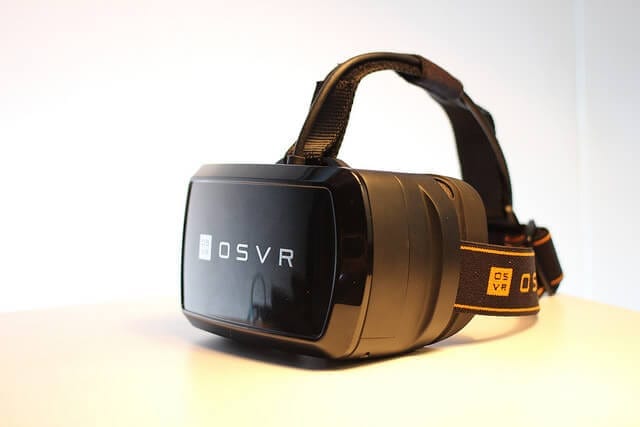In our previous article we explored how businesses and marketers can use VR. In this article we are looking specifically at open source. Those who know us here at Opace well know that we were established from a firm belief that open source technology and platforms are the future. Open source provides a means to allow for the constant improvement and enhancement of a given design or creation that isn’t restricted to simply the team of developers that originally invented the platform.
Our areas of open source expertise come in the form of web design and development using platforms such as WordPress, Joomla, Drupal or Magento for eCommerce, where we can build open existing code to create all different kinds of bespoke websites for our clients. Open source provides a much more inexpensive way of designing; it brings together millions of people around the world into a community looking to further a particular platform, and it means that clients and customers don’t have to stick with the same team of developers every time they need something small changed. Better still, with the correct expertise, they can make changes themselves!
This article is part of our series of articles below on “VR for business”:
- The History, Rise & Fall of Virtual Reality
- Has Oculus Lost the First Generation of Virtual Reality to HTC
- How Marketers Can Use Virtual Reality
- Virtual Reality vs. Augmented Reality & the Applications for Business
- Open Source Virtual Reality and What This Means for Business
- Virtual Reality Web Design; Why Every Business Will Need to Factor VR into Their Digital Marketing
- Virtual Reality eCommerce & the Future of Online Shopping (vCommerce)
- The Lowdown from Our VR Gurus, Rob and Adam
We would love to encourage some discussion and debate around where this interesting and game-changing technology is heading, so please feel free to leave us a comment below or on social media and we’ll get back to you.
Can open source be applied to VR?
We’ve investigated whether these same principles of open source, all-inclusive design be applied to virtual reality. We look below at open source virtual reality and what this could mean for business.
The benefits of open source
Just what are the benefits of open source? Open source practices are a lot more common than you may think and it’s certainly not limited to web design. Open source is even used in the cars that we drive everyday and is built around the idea of cooperation, not competition. This level of collaboration of skills and experience means that there will be cost benefits, less waste, and a decreased amount of time in which it takes to further technology, ideas and concepts forward.
Of course, businesses have been established with the idea of competing against their rivals, but sometimes it’s better to admit that maybe someone else can do what you’re trying to do a little better. By creating a pool of like-mined individuals, the results will be better than expected and most likely achieved in a shorter timeframe. And with every new brain you bring into the mix, there is the possibility of new ideas that no one had even considered before.
Open source is always subject to improvement; it can be modified to suit your needs and the worldwide community can help to solve any issues; removing the need to wait weeks on end for the original company to release a patch or update. The 2015 Future of Open Source survey revealed that 78% of businesses now use some open source software, and only 3% of businesses don’t use any open source software. Clearly, open source has transformed the web, so we wonder can it also transform virtual reality?
Open source virtual reality and business
Regarding what open source could do for virtual reality, this remains much the same as what open source can do for any technology, software or platform. It allows for accelerated development, an increased number of technologies, a host of new apps or games, the quick resolution of any issues or bugs and a much more involved, community feel.
One company is dedicated to this idea of open source in their virtual reality technology. Named Open-Source Virtual Reality (OSVR), Razer plans to create an ecosystem of open source design solely for gaming, although the idea and concept behind it could, in reality, be used for anything.
One thing that OSVR is doing much better than the other virtual reality companies is that they are allowing their software to run on Linux, Android, and Windows as well as running alongside all other virtual reality headsets. The other headsets are compatible with each other in some ways, although they seem somewhat reluctant to be as open and welcoming as OSVR.

OSVR – Open-Source Virtual Reality for Gaming – credit: Maurizio Pesce
The company behind this move believe that virtual reality has a long way to go before being a mainstream consumer product, and even further to have any real solid use for business. With this in mind, they are opening up their virtual reality software to anyone and everyone in the belief that two heads are better than one.
The benefits that this could have for businesses are clear as they are the same benefits that it’ll have for the gaming world or any other world that intends to use virtual reality technology. Businesses that accept that they aren’t necessarily the best at everything when it comes to their own business are the ones who can push on ahead quicker.
For example, Facebook, who have some of the brightest and best minds on the planet working for them, offer a Bug Bounty for anyone who finds a bug within any of their products or services. Most recently a 10-year-old boy received this prize, showing that there is no way of telling just who might be able to make a difference to your business, software, technology or product.
Other open source VR initiatives
While OSVR is currently dedicated towards the gaming market, there are a number of other open source virtual reality initiatives such as FreeVR, NeuroVR, A-Frame, and Socket HMD, which aren’t focused specifically on the gaming markets.
Having a whole virtual reality community working together towards common goals and interests could open up a whole new realm of possibilities for businesses, with a whole host of new apps, products, platforms and services that they can use to market and connect with their customers in new ways. While of course the virtual reality companies can do this themselves, it’ll take longer and will be less innovative than having millions of other people working on the same thing.
Is open source virtual reality a serious contender?
As a concept, definitely. The OSVR headset itself is clearly a serious contender in the gaming world as it will work with the big name players such as the Oculus Rift, but offers something different in that it gets the ball rolling with driving the software forward. Alongside this, the OSVR Hacker Dev Kit headset is most likely going to be cheaper than the Oculus Rift by about $100, and, truly sticking to their open source principles, you can even build one yourself!
Other groups, such as The Immersive Technology Alliance (ITA) have announced similar plans, wanting to set new open-source standards for virtual reality, although they go one step further than OSVR in that they want everything to be open source. This means the devices, cameras, sensors, phones, motions controls and everything else that a virtual reality experience will entail.
Open source isn’t for everyone. Many will simply want to just purchase one of the big named brands such as the Oculus Rift or the HTC Vive with their proven positive reviews and just get themselves immersed straight away. Many won’t have the desire or the time to be trying their hand at pushing the virtual reality market forward, and so in some ways, concepts like OSVR, that are compatible with the big name players, become almost a subset component of the more mainstream virtual reality headsets.
However, there can be no denying that it’ll be open source initiatives that will speed up the development process of virtual reality tenfold. Even Oculus know this, and so have released their Oculus Rift Development Kit 1, and later the Development Kit 2, in which all the hardware, firmware, trackers and the PCB will be open source. The only parts that won’t be open source are the pieces that are no longer in production, such as the display. With the Rift DK1 & DK2, Oculus are making the Rift an open platform in which developers have almost free reign to design, develop and sell content without paying licensing fees.
Currently, as it stands, it doesn’t look like any of the other major players such as the HTC Vive or Playstation VR have as dedicated plans for open source technology. However, if these ventures prove to be successful, as other open source platforms such as WordPress has been, it is likely that the virtual reality businesses will try and band together more to help make virtual reality the best it can be for all gamers, businesses and anyone else that can make use of it.
How important will open source be in the virtual reality race?
The likelihood is that it will be extremely important in the virtual reality race. While it may not be as mainstream as some of the other more commercial players such as the Oculus Rift, headsets such as the OSVR have a lot to offer, and this is clear with how Oculus are also adopting an open source approach.
It will ultimately be this open source platform that allows the virtual reality market to be driven forward so quickly by a community of virtual reality tech heads. As it’s still early stages with virtual reality, it’s difficult to predict just what open source will do for the technology, but it’s more than likely that many major developments that we see in the virtual reality world will come from the wider community thanks to open source platforms.
Rob Bryan and Adam Bullas, our two VR gurus here at Opace are looking forward to incorporating the technology into the Opace open source offering. With leading web design platforms like WordPress, Magento and WooCommerce, Opace see virtual reality going the same way. Rob said that it “will take a long time to happen with VR, maybe several years, but it will get there.”

![Seo content creation guide for good content - why good content matters: seo content creation guidelines [updated] Seo content creation guidelines for good content](https://www.opace.co.uk/wp-content/uploads/2024/03/SEO-content-creation-guide-for-good-content-150x150.jpeg)




0 Comments